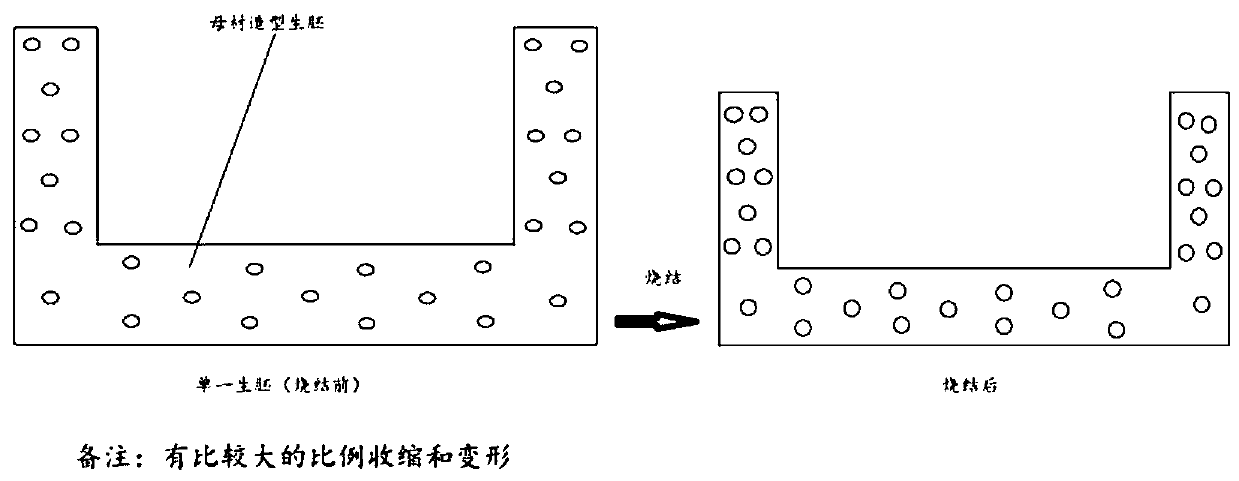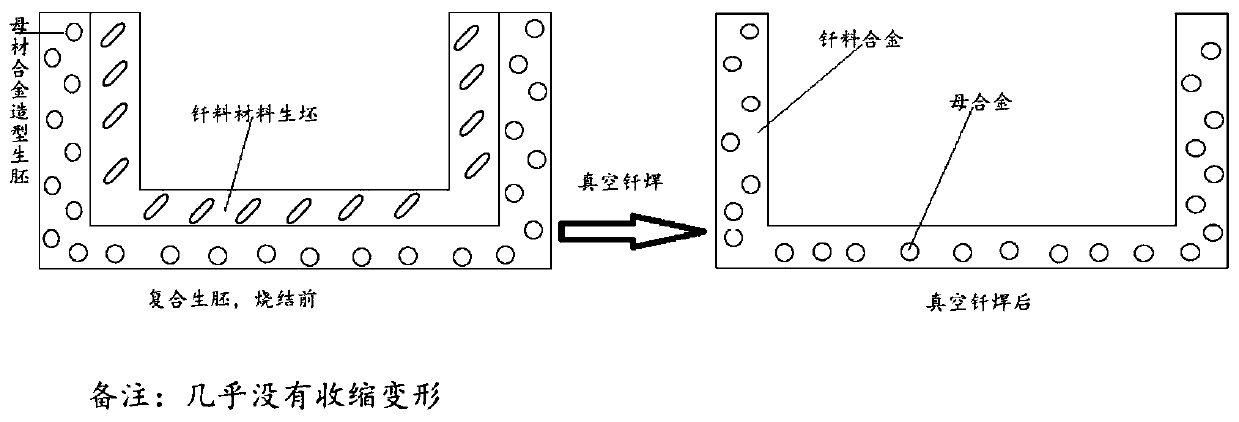Composite green body and method for additive manufacturing of metal parts by using composite green body
A composite green body and additive manufacturing technology, which is applied in the field of composite green bodies and the use of composite green bodies for additive manufacturing of metal parts, and can solve problems such as intractable asymmetric deformations.
- Summary
- Abstract
- Description
- Claims
- Application Information
AI Technical Summary
Problems solved by technology
Method used
Image
Examples
Embodiment 1
[0067] Task: Print a 316L moiré stainless steel open cup;
[0068] Step S1:
[0069] Mix 9000g of gas-atomized 304 stainless steel powder with a particle size of 10 μm to 53 μm and 1000g of HJbinder-1318 water-based binder in a double planetary vacuum mixer to obtain 10000g of stainless steel base material alloy slurry.
[0070] Mix 8800g of vacuum atomized nickel-based solder alloy BNi-7 (BNi76CrP) powder with a particle size of 0.5 μm to 75 μm and 1200 g of HJbinder-1318 water-based binder in a double planetary vacuum mixer to obtain 10000g of nickel-based solder alloy paste.
[0071] Step S2:
[0072] Fill the above prepared two slurries into the storage tank of a slurry 3D printing equipment with a twin-screw valve deposition head (note: because the viscosity of the slurry is relatively high, a screw extrusion valve is used).
[0073] Step S3:
[0074] The 3D digital model of the stainless steel open cup is established on the computer through the 3DMax modeling softwar...
Embodiment 2
[0082] Task: Print a copper alloy part with a square cavity
[0083] Step S1:
[0084] Mix 8500g of gas-atomized oxygen-free copper powder with a particle size of 10μm-53μm and 1500g of HJbinder-1318 water-based binder in a double planetary vacuum mixer to obtain 10000g of oxygen-free copper base material alloy slurry.
[0085] Mix 8600g of gas-atomized copper-based solder alloy BCuP6.2Sn7Ni1.5 powder with a particle size of 0.5μm to 75μm and 1400g of HJbinder-1318 water-based binder in a double planetary vacuum mixer to obtain 10000g of copper Base solder alloy paste.
[0086] Mix 8000g of alumina ceramic powder with a particle size of less than 75 μm and 2000g of HJbinder-1318 water-based binder in a double planetary vacuum mixer to obtain 10000g of alumina ceramic solder resist slurry.
[0087] Step S2:
[0088] Fill the above prepared three kinds of slurry into the storage tank of a slurry 3D printing equipment with 3 mechanical jet valve deposition heads (because the v...
PUM
| Property | Measurement | Unit |
|---|---|---|
| particle size | aaaaa | aaaaa |
| particle diameter | aaaaa | aaaaa |
| shrinkage | aaaaa | aaaaa |
Abstract
Description
Claims
Application Information
 Login to view more
Login to view more - R&D Engineer
- R&D Manager
- IP Professional
- Industry Leading Data Capabilities
- Powerful AI technology
- Patent DNA Extraction
Browse by: Latest US Patents, China's latest patents, Technical Efficacy Thesaurus, Application Domain, Technology Topic.
© 2024 PatSnap. All rights reserved.Legal|Privacy policy|Modern Slavery Act Transparency Statement|Sitemap



